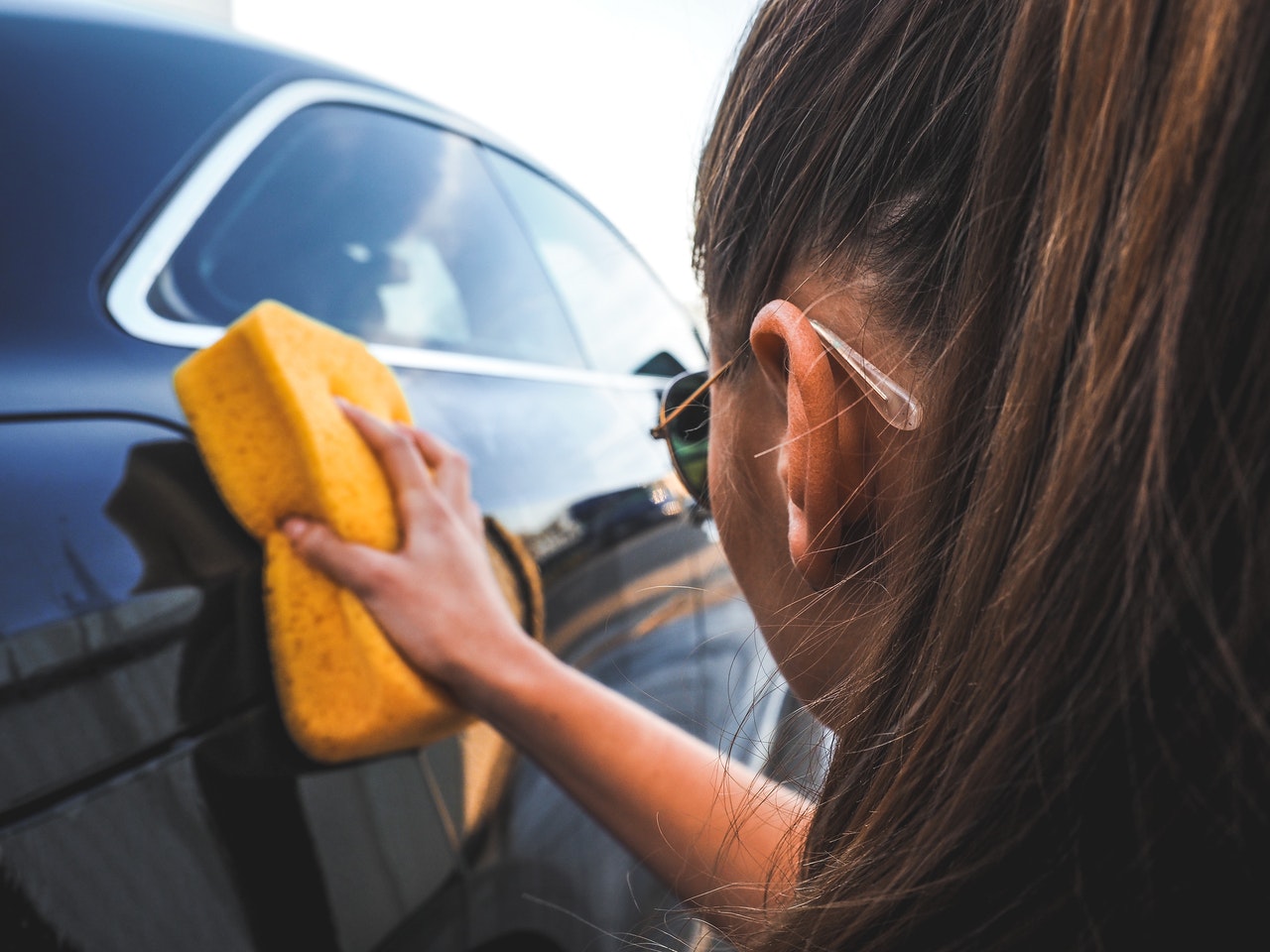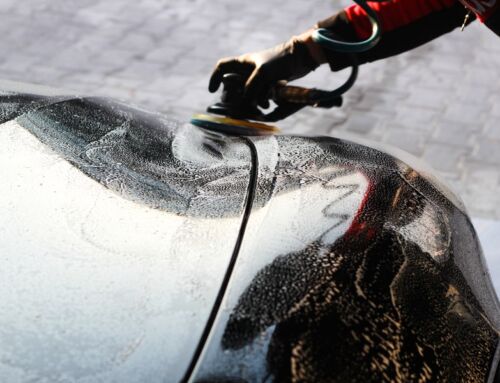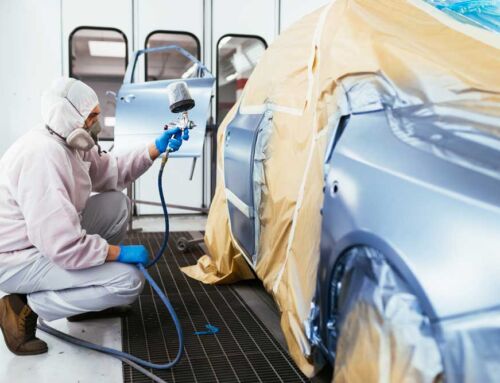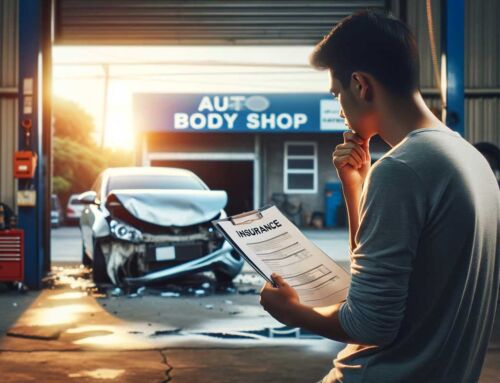Updated: May 29, 2025
Every vehicle owner has experienced that disheartening moment—standing in just the right light and noticing those spiderweb-like swirl marks marring your car's once-pristine finish.
Here in Sonoma County, where we take pride in our vehicles, these unsightly paint imperfections can be particularly frustrating. At Downtown Autobody, we understand that swirl marks not only affect your car's appearance but can also impact its resale value. Let's explore professional techniques for preventing and addressing these common paint issues.
| Topic | Key Points |
|---|---|
| Understanding Swirl Marks | Microscopic scratches in clear coat; visible in direct sunlight; caused by improper washing/drying |
| Prevention Techniques | Two-bucket washing method; high-quality microfiber towels; proper drying techniques |
| DIY Removal Options | Dual-action polishers; specialized compounds; multi-step correction process |
| Professional Solutions | Professional paint correction; ceramic coating protection; expert color matching |
Understanding the Enemy: What Causes Swirl Marks
Swirl marks are actually fine scratches in your vehicle's clear coat that catch and reflect light in circular patterns. According to research from the Insurance Institute for Highway Safety, vehicles with maintained exterior finishes retain up to 10% more value than those with visible paint damage. This makes proper paint care not just an aesthetic concern but a financial investment.
The most common culprits behind swirl marks are improper washing and drying techniques. That convenient drive-through car wash with rotating brushes might seem like a time-saver, but those brushes collect dirt and debris that act like sandpaper against your paint. Similarly, using household towels, sponges, or dirty washing mitts can introduce tiny abrasive particles that create microscopic scratches each time you touch your vehicle's surface.
Environmental factors in Sonoma County can exacerbate the problem. Our mix of sunshine, occasional coastal fog, and agricultural dust creates conditions where swirl marks become more noticeable. When sunlight hits these microscopic scratches at certain angles, they reflect light in circular patterns, creating that spider-web appearance that's so frustrating to vehicle owners.
Prevention: The Best Defense Against Swirl Marks
The most effective way to deal with swirl marks is to prevent them from occurring in the first place. Professional detailers and auto body repair specialists follow specific protocols that you can adapt for home use.
Start with the proper washing technique. The two-bucket method—one bucket with soapy water and another with clean rinse water—dramatically reduces the risk of rubbing contaminants back into your paint. Always use automotive-specific products, as household detergents can strip protective waxes and sealants from your vehicle's surface.
Your washing and drying tools make a significant difference in preventing paint damage. Consider these essential elements for swirl-free maintenance:
- High-quality microfiber washing mitts trap dirt away from the paint surface, preventing scratching during the wash process.
- Plush microfiber drying towels with a GSM (grams per square meter) rating of at least 350 provide gentle, scratch-free drying capability.
- Dedicated wheel cleaning tools prevent cross-contamination between your wheels (which collect brake dust) and your paint surfaces.
- Grit guards in your wash and rinse buckets keep debris at the bottom, away from your washing mitt.
- pH-neutral car wash soap specifically formulated for automotive finishes maintains protective coatings while safely removing contaminants.
After washing, consider applying a quality paint protection product. Modern synthetic polymer sealants, carnauba waxes, or professional-grade ceramic coatings create a sacrificial layer that helps prevent swirl marks from forming. For RVs and larger vehicles, this protective step is especially crucial, as their increased surface area makes them more susceptible to washing-induced damage. Our specialized RV repair services include paint protection options specifically formulated for these larger vehicles.
Addressing Existing Swirl Marks: Professional vs. DIY Approaches
If your vehicle already shows signs of swirl marks, you have several options for correction. The approach you choose depends on the severity of the damage and your comfort level with automotive detailing.
- Hand polishing with a high-quality swirl remover can address minor swirls, though it requires significant physical effort and time investment.
- Dual-action (DA) polishers offer a safer entry point for DIY enthusiasts, as they're designed to minimize the risk of burning through clear coat or creating holograms.
- Compound and polish combinations work by removing a microscopic layer of clear coat to level out the surface, eliminating the scratches that cause swirl marks.
- Multiple polishing pads with varying levels of aggression allow for a systematic approach to correction, starting with the least aggressive method that will address the problem.
- Ceramic coatings applied after correction provide long-term protection against future swirl marks, with some professional formulations offering up to 5 years of durability.
For severe cases or show-quality results, professional paint correction is the gold standard. Professional technicians, like our I-CAR Gold Class certified team, use advanced techniques and commercial-grade equipment to achieve results that DIY methods simply can't match. This multi-step process typically includes paint decontamination, machine compounding, fine polishing, and application of long-term protection.
Long-Term Protection Strategies
Once you've achieved a swirl-free finish, protecting your investment becomes the priority. Modern paint protection technology offers several excellent options for maintaining that perfect finish.
Ceramic coatings represent the most advanced solution available today. These silicon dioxide-based products chemically bond to your vehicle's paint, creating a hard, transparent layer that resists washing-induced swirls. Professional-grade ceramic coatings, applied in controlled environments, can provide protection for 3-5 years with proper maintenance.
For those seeking more traditional protection, high-quality carnauba waxes and synthetic sealants remain effective options. While they don't provide the longevity of ceramic coatings, they're more affordable and can be applied at home with minimal specialized equipment. Regular application every 3-4 months helps maintain a protective layer that reduces friction during washing and minimizes swirl formation.
Maintaining Your Swirl-Free Finish
Achieving a swirl-free finish is one thing—maintaining it is another. Regular maintenance using proper techniques is essential for preserving your vehicle's appearance. Consider establishing a washing routine that includes rinsing thoroughly before touching the paint, using the two-bucket method, and following proper drying protocols.
For protection between washes, quick detailers and spray sealants can help maintain the surface without introducing swirls. These products are designed to be used on lightly soiled surfaces and can extend the time between full washes, reducing the overall risk of washing-induced damage.
If you're uncertain about tackling these tasks yourself or want professional-level results, consulting with experienced auto body professionals can save you time and potential frustration. Our team at Downtown Autobody specializes in paint care and correction for all vehicle types, from daily drivers to collector cars.
Understanding Swirl Marks
Microscopic scratches in clear coat caused by improper washing and drying.
Prevention Techniques
Use two-bucket washing and quality microfiber towels for swirl-free maintenance.
Removal Options
Employ DIY solutions or opt for professional correction for severe cases.
Final Thoughts on Swirl-Free Paint Maintenance
Maintaining a swirl-free finish isn't just about aesthetics—it's about preserving your vehicle's value and protecting your investment. The techniques we've discussed require some initial learning and investment in proper tools, but the results are well worth the effort.
Remember that prevention is always easier than correction. By adopting proper washing techniques, investing in quality tools, and applying appropriate protection, you can maintain your vehicle's finish in showroom condition for years to come.
If you have questions about paint correction, swirl removal, or protective options for your specific vehicle, our team at Downtown Autobody is always available to help. As Sonoma County's premier auto body repair facility with the area's only 80-foot paint booth, we have the expertise and equipment to address all your vehicle paint care needs. Feel free to contact us with any questions about maintaining your vehicle's perfect finish.





